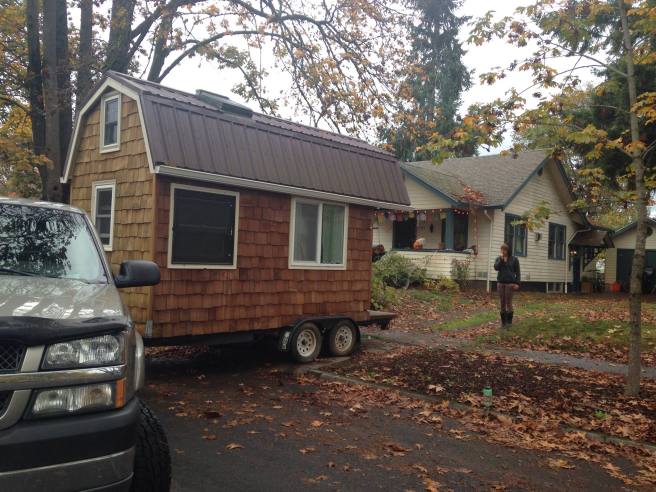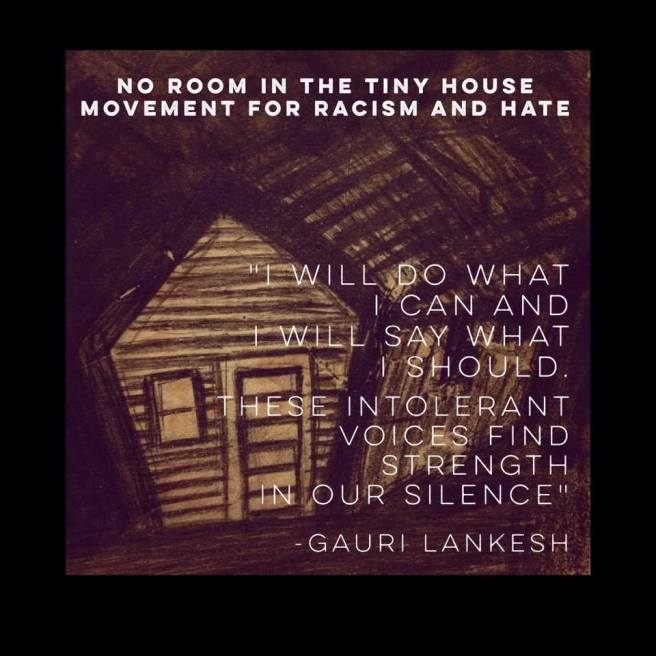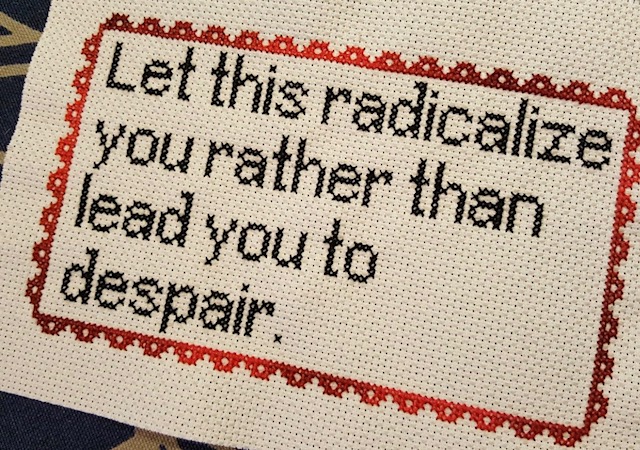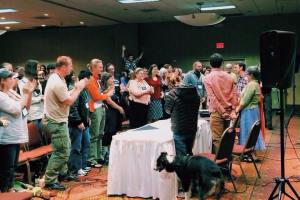Admission: I haven’t seen the movie yet, but because it’s everywhere in our cultural imagination, it is shamelessly used here to get attention. Working?
Warning: Like the movie franchise, this post keeps going.
———
As family disperses and the new year closes in, I am reflecting on how fast the last three months have gone. Almost every weekend during that time, I’ve meant to write this update. But, as a testament to the effectiveness of what I have to update about, I have been busy. New friends, new geographies, new goings-ons.
The last three and a half years I have been living in the tiny, parked in my grandmother’s backyard. Living in such close proximity with family has many benefits: support for the bad days, kitty-sitting for the gone ones, and quotidian remembrances of the days upon days gone by which all add up to make me. In this space, the first few years in the tiny were incredibly challenging but even more so insightful. I wrote through a lot of both on this blog. I learned to confront, more materially, my privileges of idealism, of impatience, of pride. I learned how comforting it is to have a grandma’s shoulder to spill tears over and then go straight to sleep, how special it is to stare up from my bed at two trees planted by my aunt and uncle when they were kiddos, how fortunate I am to be able to experience place, and history, and family, through an enduring plot of (historically stolen) land.
But. That specific spot, nurturing as it is, is also located about a 20 minute drive from campus. I hate commuting and looked so forward to biking when I moved here. Yet, I found myself driving almost every day for the first three years living in Eugene. Moreover, because the tiny was parked so far away, I rarely left my house once I was home. My life quickly became even more insular than the misleading quotes of Thoreau on tiny house blogs make his (and our) life out to be (see here; Walden was built in Emerson’s woodlot on Walden pond and Thoreau ate at the Emerson’s house almost every night; Thoreau’s mother and sister did his laundry [see here]; and Thoreau was NOT the proponent of self-reliance that American myth has made him to be [that was Emerson]. My point: Thoreau, albeit imperfect, was far more radical, community and land oriented, and critical of the idea that anyone could “go-it-alone” but we often misread his “live-deliberately” as a solo endeavor. It never was.).
After more than three years of living in isolation, this summer I became more and more unhappy. I was crying a lot, complaining even more, giving in to negative energy and giving it out as well. I hit a breaking point.
To be fair, I could feel it building over the last year. I wrote less, reflected less, grew less. Here I mean both senses of “grew less”: the tiny house was not giving up her lessons to me as easily – she and I settled into a largely unconscious relationship that I became accustomed to – AND I grew less in the sense that I became energetically smaller, or less full in my livingness-nesses. I discovered that what made me, me had slowly atrophied. Now, this degeneration was: 1) Not the tiny’s fault but my own – it was easier to ignore the sides of me that sews, crafts, hosts dinners and poetry readings, cooks, stores stuff for random projects that I then spread out to get to making, all this was easier to forget than to find a new way to do it within the space of the tiny or seek out a space not my own. Also, 2) Not a sudden shift – I had my eye on a particular neighborhood ever since moving to Eugene, a neighborhood close to my favorite bar, coffee shop, pizza place, university, PEOPLE.
Though it wasn’t a sudden break, it felt like that. I woke up one morning and just knew I had to change the way I had been living the last three years. I didn’t have enough money to pay rent on someplace new. I didn’t know how I would make it work. I just knew I needed to get out of the isolation, into the thick of the beautiful communities where I live, and back to cultivating my whole self. I knew it needed to be immediate, before I had time to find a place to move the tiny.
After one day of hiking on it – I climbed, wrote, meditated – I knew I needed to rent an apartment in that neighborhood I so loved. For the length of the hike up and down I repeated one word: trust. Though I knew that moving out of the tiny was financially irresponsible, and given the many interviews and writings I have done about tiny house movement, it felt a little fraudulent, but I knew I had to do it in the deepest form of knowing. I had felt this sort of feeling before – the crushing weight, the fear of knowing what I need to do but no idea how the seemingly irresponsible decision would turn out, the promise of transformation but the first necessary leap into the void. I moved in on September 20. Trusting that the path would appear in the nano-second before my stride touched forward.
It did. Within a month I found a wonderful person to rent the tiny house and a roommate for my new apartment, making the year break from the tiny house an affordable one.
And, that promise of transformation came through once again. I feel full, abundant, grateful. I am incredibly, incredibly happy as I plug more deeply into community, bike everywhere, and frequent the coffee shop and bar on foot. Life these last three months has been very, very good. I am still unsure if the good is because I am out of the tiny space, or because I am closer to town than where the tiny was parked. I would venture to guess that most of the positive change is just location.
There are, though, some WONDERFUL things that come from the actual space of the apartment: baths! on site laundry! couch! BIG clothes closet!! coat closet! full size refrigerator!! All these things, though, are available in a carefully planned tiny house. Which is another long-term dream: build the perfect one for me, knowing what I know now about what I need to live abundantly.
I do miss the comfort of the simplicity of the tiny, though. To me, she is like a person, and I miss her company and cradling comfort quite often. It helps that she is occupied by a wonderful women who adores the space and a kitty, too. So the space is getting love – even in my absence (and maybe because of it). Here are a few pics of the tiny at her new home:


So, this has been another enormous lesson that the tiny has gifted me: nothing is permanent, space is changeable, we are teachable, and life longs to be energetically lived.
Go get it, people! Happy holidays, and happy early New Year!



























